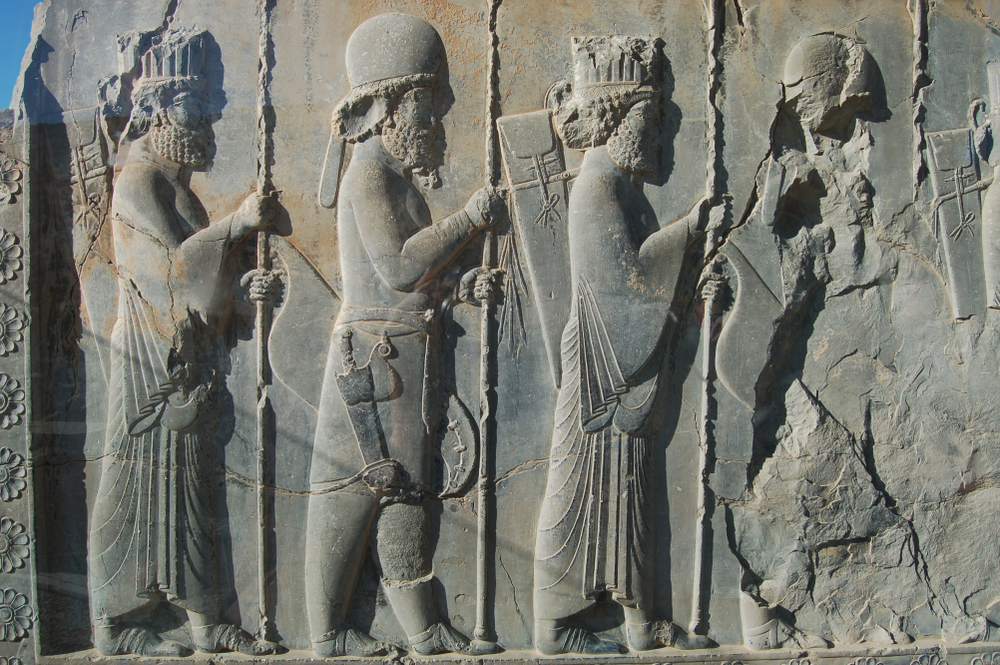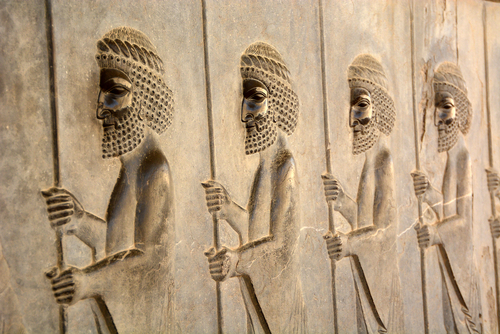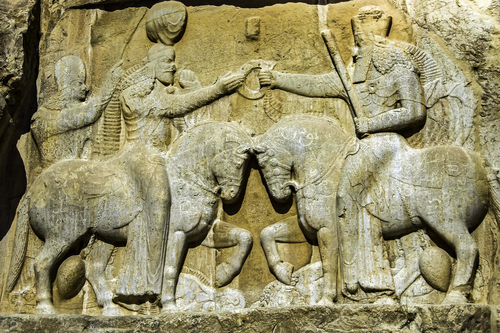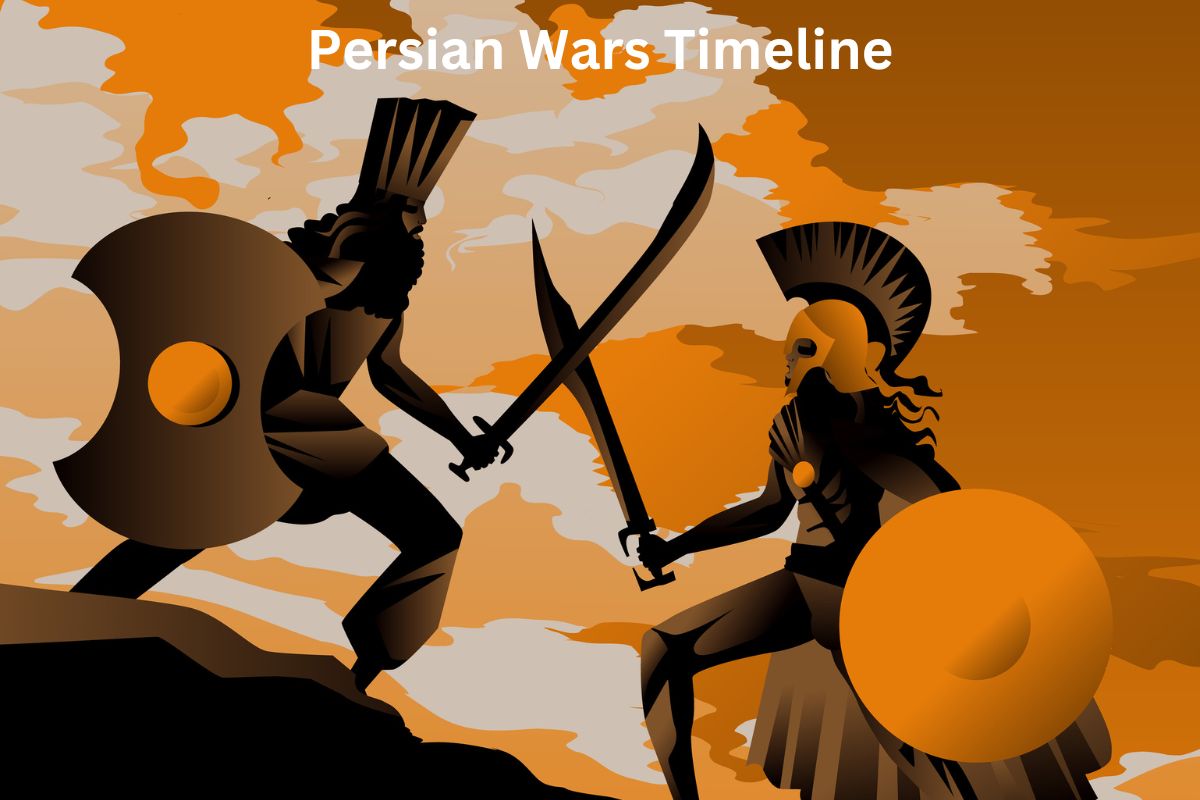The Persian Wars were a series of conflicts that took place in the 5th century BCE between the Achaemenid Empire of Persia and various Greek city-states.
These wars had a profound impact on the development of Greek civilization and marked a critical turning point in the struggle for Greek autonomy and cultural identity.
The Persian Wars consisted of two major invasions by the Persian Empire, led by King Darius I and his son Xerxes I, as well as several decisive battles on both land and sea.
The Greek city-states, united in their defense, displayed remarkable resilience and military prowess, ultimately repelling the Persian forces.
Also Read: Persian Empire Accomplishments
The Persian Wars played a crucial role in shaping the course of ancient Greek history and solidifying the Greek city-states’ collective identity as defenders of freedom and democracy.
| Year | Event |
|---|---|
| 499 BCE | Ionian Revolt |
| 492 BCE | First Persian Invasion of Greece |
| 490 BCE | Battle of Marathon |
| 480 BCE | Second Persian Invasion of Greece |
| Battle of Thermopylae | |
| Battle of Artemisium | |
| Battle of Salamis | |
| Battle of Plataea | |
| 479 BCE | Battle of Mycale |
| 449 BCE | Peace of Callias |
Timeline of the Persian Wars
Ionian Revolt (499 BCE)
The Ionian Greek city-states, located in Anatolia under Persian rule, revolt against Persian domination.
Athens and Eretria, two prominent Greek city-states, provide support to the Ionians.
The Ionian forces launch attacks on Persian positions in the region.

First Persian Invasion of Greece (492 BCE)
Seeking to punish Athens and Eretria for their involvement in the Ionian Revolt, Persian King Darius I decides to invade Greece.
Persian forces, led by Mardonius, set sail to attack Greece.
However, the Persian fleet encounters a severe storm, losing a significant portion of their ships and delaying their invasion.
Battle of Marathon (490 BCE)
After regrouping their forces, the Persians launch an invasion of Greece once again, this time under the command of Datis and Artaphernes.
The Persian army lands at Marathon, a plain northeast of Athens.
Also Read: Persian Empire Timeline
The Athenians, led by the strategos (general) Miltiades, along with their Plataean allies, confront the Persian forces.
Despite being heavily outnumbered, the Athenians successfully repel the Persians and achieve a decisive victory at the Battle of Marathon.
The victory at Marathon marks a significant turning point in the Persian Wars and becomes a source of pride for the Athenians.
Second Persian Invasion of Greece (480 BCE)
Xerxes I, the son of Darius I, seeks to avenge the Persian defeat at Marathon and continues his father’s goal of conquering Greece.
Also Read: Accomplishments of Xerxes
Xerxes leads a massive Persian army, including troops from various regions of the Persian Empire, toward Greece.
Battle of Thermopylae
A small Greek force, led by King Leonidas I of Sparta, is stationed at the narrow pass of Thermopylae to block the Persian advance.
The Greeks hold off the Persian army for several days, displaying remarkable bravery and skill.
However, a local resident named Ephialtes betrays the Greeks by showing the Persians a mountain path that allows them to flank the Greek position.
Despite their heroic resistance, the Greeks are ultimately defeated, with most of the defenders killed.

Battle of Artemisium
As the land battle at Thermopylae unfolds, the Greek navy, led by Athens and Sparta, engages the Persian fleet in a series of naval battles near the coast of Artemisium.
The Greeks aim to disrupt the Persian naval forces and prevent their invasion by sea.
The battles at Artemisium are inconclusive, but the Greek fleet manages to hold its ground and prevent the Persians from achieving a decisive victory.
Battle of Salamis
Following the defeat at Thermopylae, Athens is evacuated, and the Persian forces move south towards the city.
The Greek navy, under the command of Themistocles, takes a strategic position near the island of Salamis.
In a naval battle, the Greek ships employ superior tactics and knowledge of the local waters, inflicting heavy losses on the Persian fleet.
The defeat at Salamis forces Xerxes to abandon his plans to conquer Greece and retreats back to Persia, leaving a portion of his army behind.
Battle of Plataea (479 BCE)
With the Persian invasion halted, the Greek city-states unite to launch a counteroffensive against the remaining Persian forces in Greece.
The allied Greek army, led by Spartan general Pausanias, engages the Persians near the city of Plataea in Boeotia.
The Greeks utilize their hoplite infantry to great effect, breaking the Persian lines and inflicting heavy casualties.
The Battle of Plataea results in a decisive victory for the Greeks, effectively ending Persian military presence in Greece.
Battle of Mycale (479 BCE)
Simultaneously with the Battle of Plataea, a Greek fleet led by Athens sets sail to liberate the Ionian Greek cities in Anatolia.
The Greek navy confronts the Persian fleet near the coast of Mycale.
The Greeks achieve a significant naval victory, sinking numerous Persian ships and forcing the remaining fleet to retreat.
The Greeks proceed to land and launch a successful assault on the Persian camp, freeing the Ionian Greeks from Persian rule.
The Battle of Mycale marks the final major engagement of the Persian Wars and effectively ends Persian influence in the Aegean region.

The Peace of Callias(449 BCE)
The Peace of Callias occurred in 449 BCE and was named after the Athenian statesman Callias, who played a prominent role in negotiating the treaty. It was a peace agreement between the Delian League, led by Athens, and the Achaemenid Empire of Persia.
The exact details and terms of the peace agreement are not well-documented, and historical accounts vary.
However, according to ancient sources, the Peace of Callias had several key provisions:
- Recognition of Greek Autonomy: One of the main objectives of the Greek city-states, particularly Athens, was to secure their autonomy and independence from Persian rule. The Peace of Callias recognized the autonomy of the Greek city-states in Anatolia, which were under Persian control, effectively ending Persian influence in the region.
- Conclusion of Hostilities: The peace agreement signaled the end of the Persian Wars and brought an end to the military conflicts between the Greek city-states and the Persian Empire. It provided a period of relative stability and peace in the Greek world.
- Economic Compensation: It is suggested that Persia offered some form of economic compensation to Athens as part of the peace settlement. This compensation may have included the return of captured territories or financial reparations, but the specifics remain unclear.
The Peace of Callias was significant for Athens as it provided a sense of security and stability, allowing the city-state to focus on its own internal development and growth.
It also marked the culmination of the Greek city-states’ resistance against Persian aggression, solidifying the notion of Greek unity and pride in their successful defense against the mighty Persian Empire.
